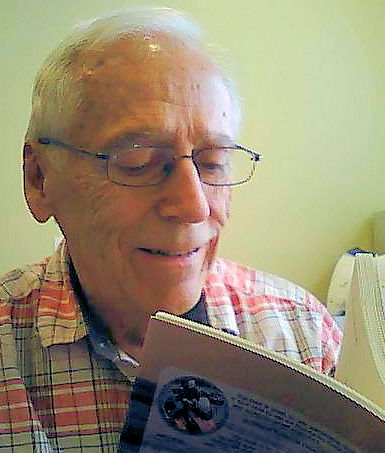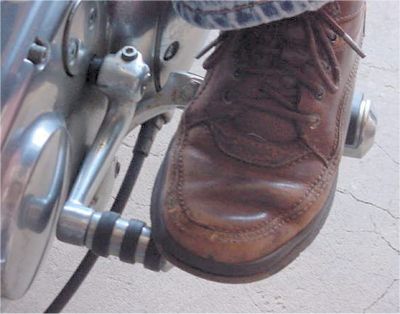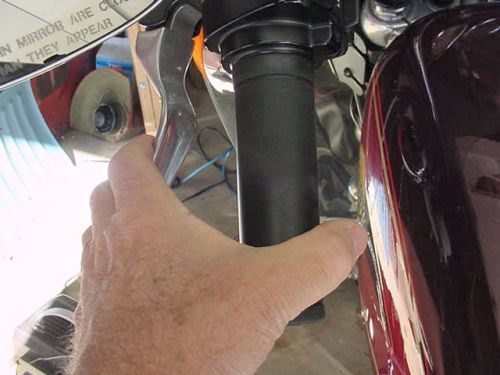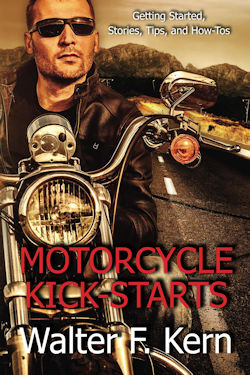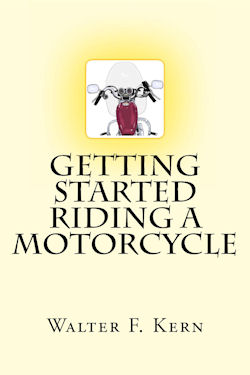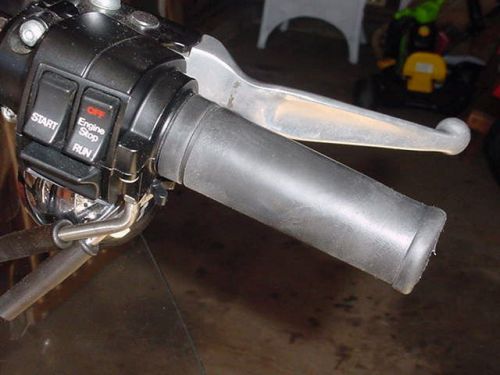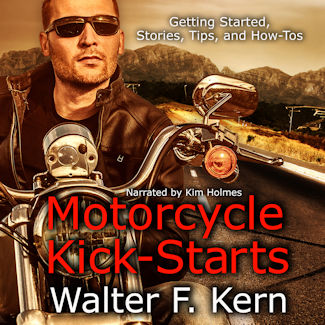7 Things Only a Biker Knows By Walter F. Kern Introduction The following is certainly nothing new for an experienced motorcyclist. However, people brand new to motorcycling and those who are on the outside of motorcycling, will find that bikes are quite different from cars. The following assumes modern motorcycles and cars driven on the right side of the road. This does not apply completely to motor scooters. Over the last 100+ years of motorcycle history, there have been many configurations of motorcycle controls. Fortunately, standardization did occur and now you can go from one bike to another and be able to ride it safely. Here are seven (7) things only a biker knows. There are quite a few more so if you're interested in learning about motorcycles, check out the articles in the sidebar. Want to learn to ride? Read my 5-part article, You CAN Ride a Motorcycle. 1. You Shift Gears With Your Left Foot
Most cars have automatic transmissions these days. Manual transmission cars do exist. You use your right hand to shift a car. Bikes are different. You shift gears by kicking a ratchet down smartly for each lower gear. The normal configuration is 1-N-2-3-4-5-6, assuming a 6-speed transmission. N stands for Neutral. If your bike is in first gear, you go to second gear, by kicking upward smartly with the toe of your boot on the bottom of the shifter. A similar action is done to go through the remaining gears one at a time. I won't go into all the operations required to support the shift such as use of the clutch.
2. The Clutch Lever is on the Left Handlebar Grip
For those used to driving a car with a manual transmission, the clutch is on the floor just to the left of the brake pedal. On a motorcycle, the clutch lever -- no pedal -- is squeezed by the fingers of the left hand. Squeeze the lever until it is close to the left handlebar grip to activate the clutch. Release your grip gradually and apply a bit of throttle just after you have shifted gears and the bike will be moving in another gear. The motorcycle clutch lever is either connected to a cable that goes to the physical clutch release mechanism or it is hydraulically operated. Use of a hydraulic clutch eliminates broken clutch cables and makes using the clutch easier. There are two more things following the ads.
3. The Front Brake Lever is on the Right Handlebar Grip
In a car, there is a single brake pedal that controls the brakes on all four wheels. On a motorcycle, there are various braking systems in use that separately control the brakes on the front wheel and the brakes on the rear wheel. To control the brakes, a motorcycle has a front wheel brake lever located on the right handlebar grip and a rear wheel brake pedal. Modern bikes have disc brakes on the front wheel and either disc or drum brakes on the rear wheel. The front brake is the most important brake on the motorcycle. It has about 70-80 percent of the total stopping force. On a motorcycle, riders use the two brakes together but favor the front brake in most situations. Beginning riders without training often use the rear brake and avoid the front brake. The result is a significantly increased distance to get the bike stopped. Some bikes have Linked Braking Systems (LBS) where squeezing the front brake lever activates a portion of the front braking action and also activates a portion of the braking action on the rear disc brake. (Some examples are the Honda Gold Wing 1800 and Honda ST1300.) The Honda Gold Wing 1500 has a Unified Braking System (UBS) where the front brake lever controls the right front disc brake only while depressing the rear brake pedal applies the left front disc brake as well as the rear disc brake.) Also, optional ABS brakes are used on bikes, as in cars, to stop the bike without locking the wheels on slick surfaces. 4. The Rear Brake is Controlled by the Right Foot
In a car, there is a single brake pedal that controls the brakes on all four wheels. On a motorcycle, there are various braking systems in use that separately control the brakes on the front wheel and the brakes on the rear wheel. To do this, a motorcycle has a front wheel brake lever and a rear wheel brake pedal. The rear wheel brake on a motorcycle can be either disc or drum with most modern bikes using disc brakes. The rear wheel brake has its own master cylinder and associated foot pedal on the right side of the bike. Of all the controls used to operate a motorcycle, the rear wheel brake, controlled by a brake pedal on the right side of the bike, is most like the brake pedal on a car. For that reason, many beginning riders tend to favor the brake pedal thinking that it is all that is required to stop the motorcycle. Such is not the case since the front brake is the most important on the motorcycle. It has about 70-80 percent of the total stopping force. On a motorcycle, riders use the two brakes together but favor the front brake in most situations. Beginning riders without training often use the rear brake and avoid the front brake. The result is a significantly increased distance to get the bike stopped. Bikes also may have systems where depressing the rear foot brake also activates a portion of the braking action on the front wheel. Also, optional ABS brakes are used on bikes, as in cars, to stop the bike without locking the wheels on slick surfaces. => Page 2: 3 more things only a biker knows |
|||||||||
© 2018 Walter F. Kern. All rights reserved.
|


